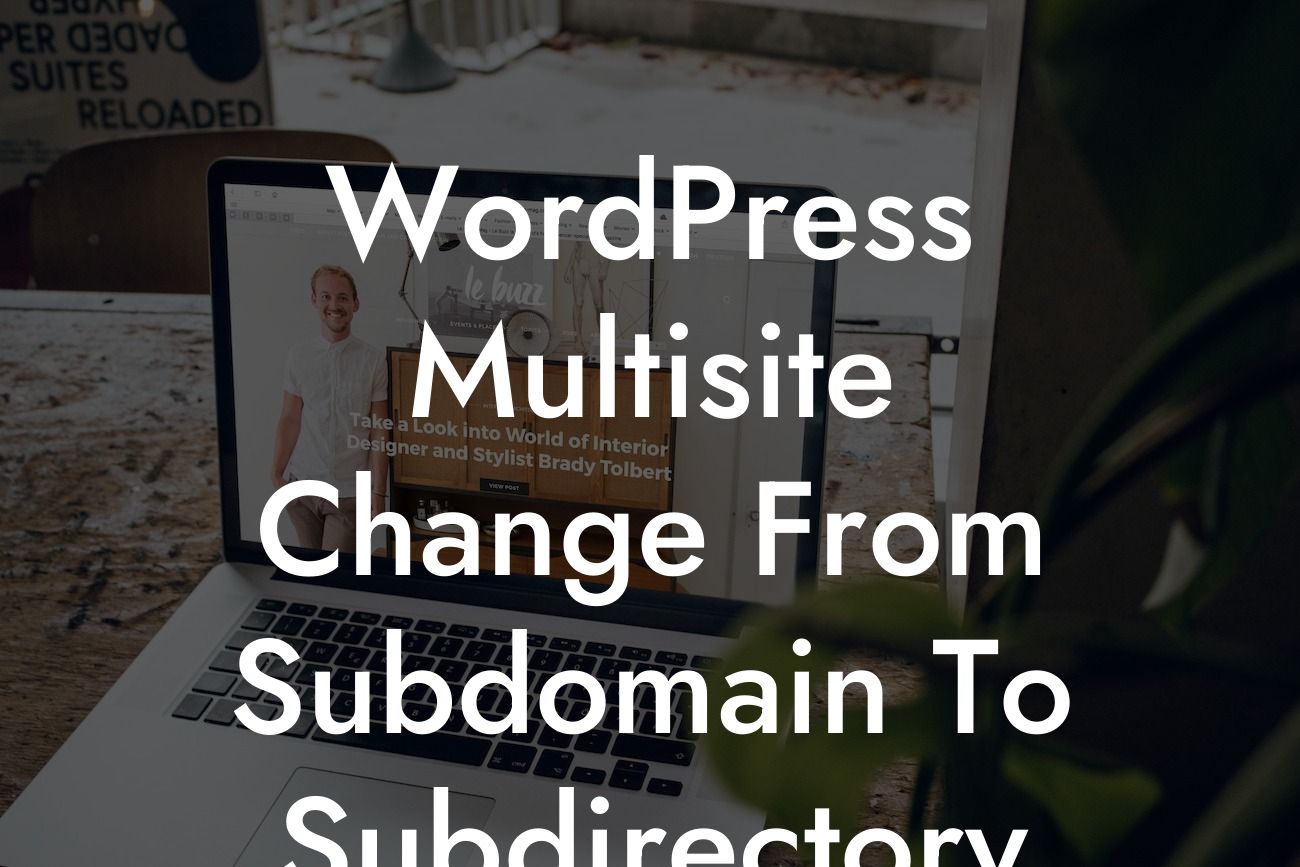Are you a small business owner or entrepreneur looking to take your online presence to the next level? If so, you've probably considered using WordPress Multisite to manage multiple websites under one dashboard. While WordPress Multisite offers a convenient way to streamline your online operations, you may find yourself needing to switch from subdomain to subdirectory for various reasons. In this article, we'll guide you through the process of making this change seamlessly, ensuring you maintain your online presence without any hiccups.
Changing your WordPress Multisite from subdomain to subdirectory involves a few essential steps. Let's break them down:
1. Backup your website: Before making any changes, it's crucial to create a backup of your entire website, including the database. This step ensures that in case of any unforeseen complications, you can revert back to the previous version easily.
2. Disable Multisite: With the backup in place, it's time to disable the WordPress Multisite feature. This will require a few changes in your site's files and database. We recommend using a reliable FTP client and phpMyAdmin to access and modify these files and settings.
3. Edit the wp-config.php file: Navigate to your WordPress installation directory and locate the wp-config.php file. Open it using a code editor and find the line of code that defines "MULTISITE." Change the value from "true" to "false" and save the file.
Looking For a Custom QuickBook Integration?
4. Modify .htaccess file: Next, you'll need to modify the .htaccess file in the root directory of your WordPress installation. Add the code provided by the WordPress Codex to the .htaccess file, making sure to follow the instructions carefully. This step is crucial for proper redirection of subdomains to subdirectories.
5. Update permalinks and URLs: After modifying the necessary files, log in to your WordPress dashboard and navigate to the "Settings" menu. Under "Permalinks," save the changes to ensure all links are redirected correctly.
Wordpress Multisite Change From Subdomain To Subdirectory Example:
To better understand the process, let's consider the example of Sarah, a small business owner who runs a photography website with WordPress Multisite using subdomains. As her business expands, she realizes the need to switch from subdomains to subdirectories to better manage her growing number of photography services.
Sarah follows the steps outlined above, backing up her website, disabling Multisite, editing the wp-config.php file, modifying the .htaccess file, and updating permalinks and URLs. With careful execution, she successfully transitions her WordPress Multisite, maintaining both functionality and her online presence.
Congratulations! You've now learned how to change your WordPress Multisite from subdomain to subdirectory seamlessly. By utilizing this powerful feature, you've taken a big leap towards managing your online presence more efficiently. Don't forget to explore other engaging guides on DamnWoo and check out our awesome plugins to supercharge your success. Share this article with others who may benefit from it and continue elevating your online journey.













